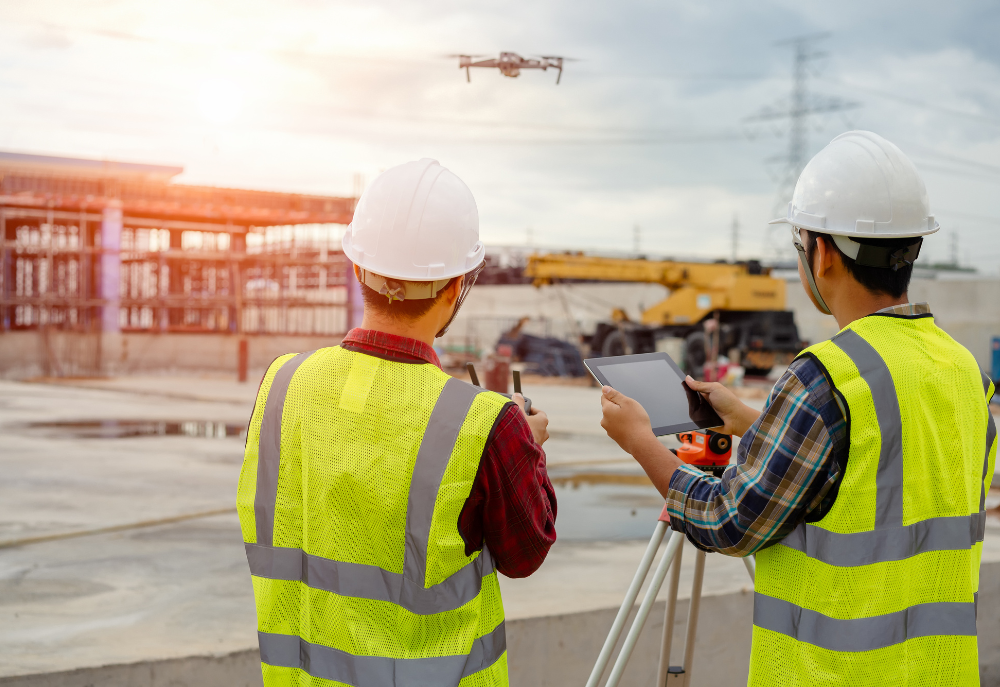The construction industry has long been known for its traditional methods and labor-intensive processes. However, in recent years, technological advancements have been rapidly reshaping the landscape of construction. From drones soaring above construction sites to robots handling heavy tasks, technology is revolutionizing how projects are planned, executed, and completed. In this blog post, we’ll explore the profound impact of technology on the construction sector and the innovative solutions it brings to the table.
- Drones: The Aerial Observers
Drones have become a ubiquitous sight at construction sites. These unmanned aerial vehicles provide a bird’s-eye view of the project, allowing for enhanced site inspection, progress monitoring, and data collection. Here’s how drones are transforming construction:
a. Site Surveys: Drones can quickly and accurately map construction sites, creating 3D models that aid in project planning and design.
b. Progress Monitoring: Regular drone flights capture real-time images and videos, enabling project managers to track progress and identify potential issues.
c. Safety Inspections: Drones can access hard-to-reach or hazardous areas, conducting safety inspections without risking human lives.
- Building Information Modeling (BIM): The Digital Blueprint
BIM is a digital representation of a building’s physical and functional characteristics. It’s much more than a traditional blueprint; it’s a dynamic, data-rich model that fosters collaboration and efficiency. Key benefits of BIM in construction include:
a. Design Collaboration: Architects, engineers, and contractors can collaborate in real-time, reducing errors and conflicts in the design phase.
b. Cost Estimation: BIM helps create accurate cost estimates, reducing budget overruns.
c. Project Visualization: BIM allows stakeholders to visualize the project before construction begins, enhancing decision-making.
- Robotics: The Heavy Lifters
Robots are taking on physically demanding and repetitive tasks in construction, improving efficiency and worker safety. Some examples of robotic applications in construction are:
a. Bricklaying Robots: These robots can lay bricks with precision and speed, reducing labor costs and ensuring uniform quality.
b. Autonomous Equipment: Self-driving construction equipment, such as bulldozers and excavators, can operate with minimal human intervention.
c. Exoskeletons: Wearable exoskeletons reduce strain and fatigue on workers by augmenting their strength.
- Augmented Reality (AR) and Virtual Reality (VR): Immersive Construction
AR and VR technologies are transforming how projects are planned, visualized, and executed:
a. Design Visualization: Architects and clients can experience virtual walkthroughs of a construction project before ground is broken, providing a realistic sense of the final product.
b. Safety Training: VR simulations allow workers to practice safety procedures and emergency response in a controlled environment.
- Construction Management Software: Streamlining Operations
Construction management software is improving project planning, scheduling, and communication. These tools offer:
a. Project Scheduling: Automated scheduling tools optimize project timelines and resource allocation.
b. Document Management: Digital platforms streamline document sharing, reducing paper waste and improving collaboration.
c. Cost Tracking: Financial tracking software ensures that projects stay on budget by monitoring expenses and identifying cost overruns early.
Technology is no longer a novelty in construction; it’s an integral part of the industry’s evolution. From drones providing aerial insights to robots handling heavy lifting, and from BIM revolutionizing project planning to AR and VR offering immersive experiences, technology is boosting efficiency, safety, and collaboration in construction. Embracing these innovations is not just a choice but a necessity for construction companies looking to thrive in the modern age. As technology continues to advance, the construction industry’s transformation is poised to accelerate further, bringing about more innovative solutions and improved project outcomes.








Leave A Comment